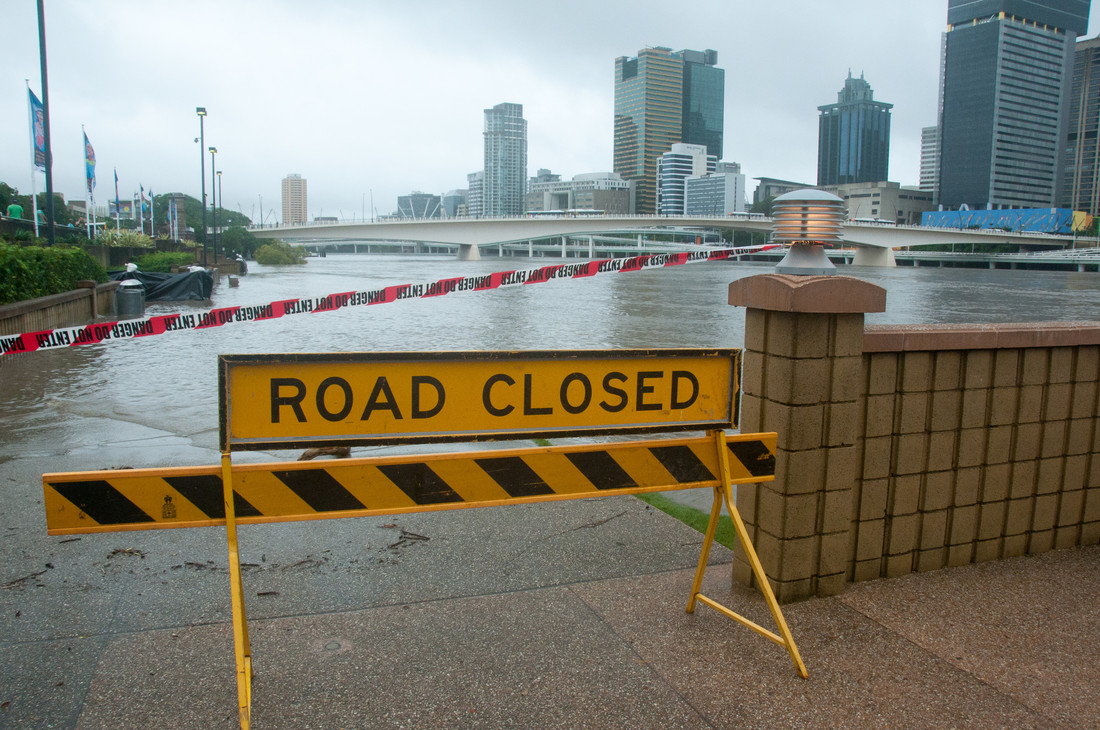Future changes in extreme weather and climate events

Australians will experience climate change mainly through weather and climate extremes.
Australia is expected to experience an increase in extremely high temperatures, and droughts in southern areas.
A consequential increase in the number of dangerous fire weather days is projected, and a longer fire season for southern and eastern Australia.
A decrease in the frequency of extremely cold temperatures is expected.
Fewer tropical cyclones are expected but a greater proportion will be of high intensity.
Heavy rainfall events are expected to continue to become more intense, as warmer air can hold more water vapour (a 7 per cent increase in atmospheric moisture for every degree of global warming).
Extreme sea levels that had a probability of occurring once in 100 years are projected to occur each year by the end of this century if we achieve a lower emissions scenario, and by mid-century with higher emissions.
Extensive, intense and longer-lasting marine heatwaves are expected, leading to increased risk of more frequent and severe coral bleaching.
Impacts of extreme weather and climate events
These changes will pose significant challenges for disaster risk management, water and food security, ecosystems, forestry, buildings, transport, energy, human health, tourism, and national security.
For example, many animal and plant species may decline or become extinct, water resources are expected to decline in southern Australia, agricultural zones are likely to shift, coastal erosion and inundation are expected to occur more often, energy demand is likely to increase, and snow cover will decline.
Heatwaves can affect health, causing heat-related deaths to rise. For example, the Black Saturday bushfires in Victoria in 2009 resulted in 173 deaths, but more than twice this number of people died due to the heatwave leading up to the fires (374 deaths).
Extreme rainfall events often lead to flooding, bringing increased risk to housing and other infrastructure, the insurance industry, and the security and continuity of electricity supply.
Future changes in extreme weather and climate events
Small changes in average temperature can lead to large changes in the number of extreme temperatures.
Australians will experience climate change mainly through weather and climate extremes.
Australia is expected to experience an increase in extremely high temperatures, and droughts in southern areas.
A consequential increase in the number of dangerous fire weather days is projected, and a longer fire season for southern and eastern Australia.
A decrease in the frequency of extremely cold temperatures is expected.
Fewer tropical cyclones are expected but a greater proportion will be of high intensity.
Heavy rainfall events are expected to continue to become more intense, as warmer air can hold more water vapour (a 7 per cent increase in atmospheric moisture for every degree of global warming).
Extreme sea levels that had a probability of occurring once in 100 years are projected to occur each year by the end of this century if we achieve a lower emissions scenario, and by mid-century with higher emissions.
Extensive, intense and longer-lasting marine heatwaves are expected, leading to increased risk of more frequent and severe coral bleaching.
Impacts of extreme weather and climate events
These changes will pose significant challenges for disaster risk management, water and food security, ecosystems, forestry, buildings, transport, energy, human health, tourism, and national security.
For example, many animal and plant species may decline or become extinct, water resources are expected to decline in southern Australia, agricultural zones are likely to shift, coastal erosion and inundation are expected to occur more often, energy demand is likely to increase, and snow cover will decline.
Heatwaves can affect health, causing heat-related deaths to rise. For example, the Black Saturday bushfires in Victoria in 2009 resulted in 173 deaths, but more than twice this number of people died due to the heatwave leading up to the fires (374 deaths).
Extreme rainfall events often lead to flooding, bringing increased risk to housing and other infrastructure, the insurance industry, and the security and continuity of electricity supply.
Related to this page
- Climate change in Australia: Climate extremes
- Climate change and extreme events: ECOS
- Extreme weather and Australia’s coastal habitat: CSIROscope
- Australian climate extremes: Bureau of Meteorology
- How are extreme events changing: Australian Academy of Science
- Australia’s climatic extremes: Geoscience Australia
